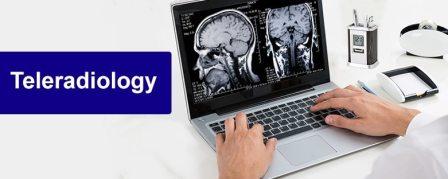
Introduction: In Austria, a nation celebrated for its rich cultural heritage and breathtaking landscapes, teleradiology is at the forefront of a healthcare revolution. This article delves into how teleradiology is reshaping radiology practices in Austria, modernizing healthcare, and enhancing the nation’s ability to provide precise, efficient, and patient-centric radiological services.
Revolutionizing Radiology: Teleradiology’s Role in Austria’s Health
Austria’s healthcare sector is undergoing a radical transformation, with teleradiology leading the way as a revolutionary force in radiology practices. This technology-driven approach is revolutionizing the delivery of healthcare services, addressing changing healthcare needs, and equipping healthcare providers with advanced tools for more accurate, efficient, and patient-centered radiological services.
Key Drivers of Radiological Revolution
1. Technological Advancements
Austria has made substantial investments in building a robust digital infrastructure, ensuring high-speed internet connectivity nationwide. This technological foundation is vital for the seamless transmission of high-quality medical images, enabling real-time consultations and diagnosis.
2. Skilled Healthcare Workforce
The success of teleradiology in Austria is underpinned by a highly skilled healthcare workforce. Radiologists and technicians have received specialized training to interpret digital images effectively, ensuring accurate diagnoses and timely reporting, ultimately enhancing patient care.
3. Collaborative Healthcare Ecosystem
Austria’s healthcare system operates within a comprehensive telemedicine framework, allowing for collaborative consultations with various medical specialties. This multidisciplinary approach revolutionizes patient care, treatment planning, and overall healthcare outcomes.
4. Regulatory Support
The Austrian government has recognized the potential of teleradiology and has established regulations and policies to safeguard patient privacy, data security, and quality standards. This regulatory framework instills trust in the teleradiology system and supports its role in the radiological revolution.
Teleradiology’s Impact on Radiological Revolution
The implementation of teleradiology in Austria is significantly transforming radiology practices:
1. Enhanced Diagnosis and Treatment
Healthcare providers can access accurate and timely diagnostic information, leading to improved treatment planning and better patient outcomes.
2. Efficient Resource Utilization
Teleradiology has optimized the utilization of healthcare resources, reducing costs and increasing the efficiency of radiological services, making healthcare provision more cost-effective.
3. Healthcare Accessibility
Austria is ensuring that radiological services are accessible to all residents, including those in remote or underserved areas, revolutionizing healthcare delivery and fostering patient-centered care.
Future Prospects
Austria’s commitment to revolutionizing radiology through teleradiology signifies a promising future for the nation’s healthcare system. With the right infrastructure, workforce, collaboration, and regulatory support, Austria’s experience demonstrates how radiological practices can be modernized to provide advanced services that benefit both healthcare providers and patients.
In conclusion, teleradiology is revolutionizing radiology practices in Austria, modernizing healthcare, and enhancing patient care. With dedication to excellence and innovation, Austria is setting the stage for a healthcare system that is more accurate, efficient, and patient-centered, ultimately benefiting the health and well-being of its citizens.
Service Areas:- Indonesia – Jakarta (capital), Surabaya, Bandung, Medan, Semarang, Bekasi, Tangerang, Makassar, Depok, Palembang, South Tangerang, Bandar Lampung, Batam, Pekanbaru, Bogor.
